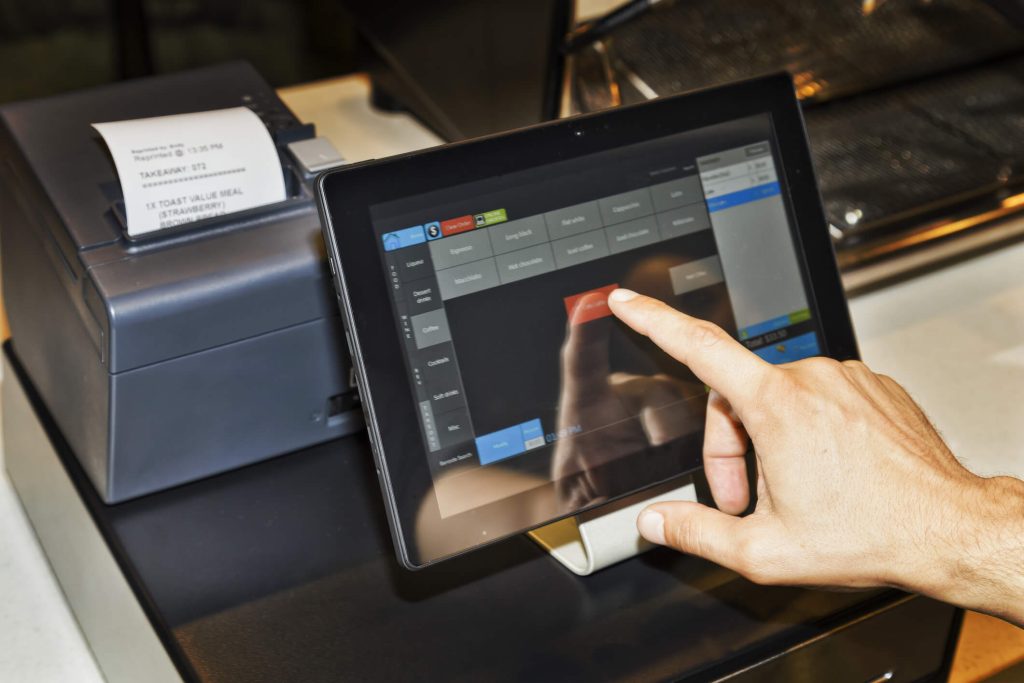
By admin May 14, 2024
Integrating POS systems with fitness management software is a strategic move for gym owners looking to streamline operations and enhance the member experience. This integration allows for a seamless connection between sales transactions and member management, providing a holistic view of business operations and improved data accuracy. Here’s a step-by-step guide on how to achieve this integration effectively.
Understanding the Importance of POS Systems in Fitness Centers
POS systems have become an integral part of modern businesses, including fitness centers. These systems offer a wide range of benefits that help streamline operations, improve efficiency, and enhance the overall member experience. Understanding the importance of POS systems in fitness centers is crucial before diving into the integration process.
What is a POS System and How Does it Work in a Fitness Center?

A POS system is a combination of hardware and software that allows businesses to process transactions, manage inventory, and track sales. In a fitness center, a POS system is used to handle various tasks such as membership payments, retail sales, and class bookings. It typically consists of a computer or tablet, a cash register or card reader, and software that integrates with other systems.
To understand how a POS system works in a fitness center, let’s consider an example. When a member visits the front desk to make a payment for their monthly membership, the staff can use the POS system to process the transaction. The system will deduct the amount from the member’s account, update their payment history, and generate a receipt. This seamless process eliminates the need for manual calculations and reduces the chances of errors.
Benefits of Integrating POS Systems with Fitness Management Software
Integrating POS systems with fitness management software offers numerous benefits for both fitness center owners and members. Let’s explore some of the key advantages of this integration:
1. Streamlined Operations
Integrating a POS system with fitness management software allows for the automation of daily tasks. This integration can streamline processes such as membership registrations, class bookings, and product purchases. By having a centralized system, gym staff can manage these tasks more efficiently, reducing the time spent on administrative duties and minimizing the risk of errors.
2. Enhanced Member Experience
A seamless integration between POS and fitness management software significantly enhances the member experience. Members can easily check in, register for classes, and purchase products or services without redundant data entry or delays. This convenience leads to higher member satisfaction and retention, as the overall experience is smooth and hassle-free.
3. Accurate Financial Tracking
With integrated systems, all financial transactions are automatically updated in real-time. This synchronization ensures that financial records are always up-to-date and accurate. Gym owners can track revenues, monitor expenses, and analyze financial data more effectively, facilitating better financial decision-making and budgeting.
4. Improved Inventory Management
The integration helps manage inventory more efficiently. When a product is sold through the POS, the inventory levels in the fitness management software are automatically updated. This real-time tracking helps prevent stock-outs and overstock situations, ensuring that the fitness center can meet member demands without unnecessary expenditure on surplus inventory.
5. Data Consolidation
Integrating these systems consolidates data collection and storage, providing a comprehensive view of business operations. Fitness centers can access member information, transaction history, class attendance, and financial reports all from a single platform. This consolidated data pool is invaluable for analyzing trends, member behavior, and business performance.
6. Targeted Marketing
With detailed member data gathered from the integrated system, gyms can execute more targeted and effective marketing campaigns. Information such as purchase history and class attendance can be used to tailor promotions and communications to individual preferences and habits, increasing the relevance and effectiveness of marketing efforts.
7. Enhanced Security
The integration of POS systems with fitness management software also enhances security. Sensitive information, such as member payment details, is managed more securely when systems are integrated. Stronger security protocols can be implemented across the unified system, reducing the risk of data breaches and ensuring compliance with data protection regulations.
8. Mobile Access and Flexibility
Many integrated systems offer mobile access, allowing gym staff and members to interact with the system from anywhere, whether checking class schedules, tracking workouts, or making payments. This flexibility improves the accessibility of the gym’s services, enhancing member engagement and satisfaction.
9. Customized Member Services
The integration allows gyms to provide customized services to members. For example, based on purchase history and class participation tracked through the system, gyms can offer personalized workout plans, nutrition guidance, and special discounts on products or services that align with individual member preferences.
10. Reduced Costs
While the initial setup of an integrated system may involve some investment, over time, the automation and efficiency gains can lead to significant cost reductions. These savings come from reduced labor costs, decreased errors and duplications in data handling, and more effective inventory management.
Choosing the Right Fitness Management Software for Integration
Selecting the right fitness management software is crucial for the efficient operation and success of a fitness center. This type of software streamlines various aspects of business management, from membership and staff scheduling to financial reporting. Here are some key features to look for when choosing fitness management software:
1. Membership Management

A good fitness management software should offer comprehensive tools for managing memberships. This includes sign-ups, renewals, cancellations, and freezes. The system should allow for easy input and retrieval of member data, such as contact information, fitness goals, and membership history. Automatic reminders for membership renewals and payments can significantly enhance the efficiency of this process.
2. Booking and Scheduling

The software should provide a user-friendly interface for both staff and members to book and schedule classes or sessions. It should support online booking, allowing members to reserve classes or appointments directly from their devices. The system should also enable easy scheduling of personal training sessions, with capabilities to adjust for trainer availability and member preferences.
3. Billing and Payment Processing
Efficient handling of billing and payments is essential. Look for software that supports various payment methods (credit/debit cards, online payments, etc.) and integrates seamlessly with your POS system if available. Automated billing features, such as direct debits and recurring payments, are also important for ensuring timely collections and reducing administrative workload.
4. Financial Reporting
The ability to generate detailed financial reports is a crucial feature. Fitness management software should provide insights into revenue streams, expenses, profit margins, and other financial metrics. Customizable reporting that allows gym owners to track specific aspects of their business can help in making informed decisions.
5. Communication Tools
Effective communication tools within the software can enhance member engagement and retention. Features might include automated emails and text messages for booking confirmations, membership renewals, promotions, and general notifications. Integration with social media platforms can also be beneficial for marketing purposes.
6. Staff Management
Management of staff schedules, payroll, certifications, and performance can all be streamlined through comprehensive fitness management software. Features such as time tracking, payroll integration, and performance reports can help in managing a diverse team of employees efficiently.
7. Mobile Compatibility
In today’s mobile-first world, having a mobile-compatible software is essential. The software should offer a mobile app or a mobile-responsive design that allows members and staff to interact with the system from their smartphones. This can include checking schedules, booking classes, processing payments, and accessing workout plans.
8. Client Tracking and Progress Monitoring
Tools for tracking client progress towards fitness goals can significantly enhance the value provided by a gym. Look for software that allows trainers to input workout results, track client progress over time, and adjust workout plans accordingly. Nutritional tracking and integration with wearable devices can also add value.
9. Inventory Management
For gyms that sell merchandise or offer rental equipment, inventory management features are important. The software should track stock levels, manage orders, and provide alerts when supplies are low, helping to avoid stockouts or overstock situations.
10. Security and Data Protection
Given the sensitive nature of member data, robust security measures are a must. The software should comply with data protection regulations such as GDPR or HIPAA where applicable. Encryption of data, secure login protocols, and regular backups are features that help ensure data integrity and security.
Compatibility and Integration Options with POS Systems
Before finalizing the fitness management software, it is essential to check its compatibility and integration options with your POS system. Contact the software provider to inquire about their integration capabilities and whether they have experience integrating with your specific POS system. It is also advisable to request a demo or trial period to test the integration before committing to a long-term contract.
Step-by-Step Guide to Integrating POS Systems with Fitness Management Software
Now that you understand the importance of POS systems in fitness centers and have chosen the right fitness management software, let’s dive into the step-by-step guide for integrating the two seamlessly.
Assessing Your Current POS System and Software Needs
The first step in the integration process is to assess your current POS system and software needs. Evaluate your existing POS system’s capabilities and limitations, and identify any specific requirements you have for the integration. This assessment will help you determine the integration method that best suits your fitness center.
Selecting the Right Integration Method for Your Fitness Center
There are several integration methods available, depending on your POS system and fitness management software. The most common integration methods include API integration, third-party integrations, and custom development. Consider the pros and cons of each method and choose the one that aligns with your requirements and budget.
Implementing the Integration Process: Best Practices and Considerations
Once you have selected the integration method, it’s time to implement the integration process. Follow these best practices and considerations to ensure a smooth integration:
- Backup Data: Before starting the integration process, make sure to back up all your data to avoid any potential loss or corruption.
- Test in a Sandbox Environment: Create a sandbox environment to test the integration before deploying it in your live system. This allows you to identify and resolve any issues or bugs without affecting your operations.
- Train Staff: Provide comprehensive training to your staff on how to use the integrated system. This will ensure a smooth transition and minimize any disruptions in daily operations.
- Monitor and Troubleshoot: Regularly monitor the integrated system for any issues or errors. Have a troubleshooting plan in place to address any problems that may arise.
Frequently Asked Questions
Q.1: Can I integrate my existing POS system with any fitness management software?
While most fitness management software offers integration options, not all POS systems may be compatible. It is crucial to check with the software provider and your POS system vendor to ensure compatibility before proceeding with the integration.
Q.2: What are the costs associated with integrating POS systems with fitness management software?
The costs associated with integration can vary depending on the integration method, software providers, and any additional customization required. It is advisable to request quotes from different vendors and compare the costs before making a decision.
Q.3: Will integrating POS systems affect my current membership management processes?
Integrating POS systems with fitness management software should not significantly impact your current membership management processes. However, it is essential to thoroughly test the integration and train your staff to ensure a smooth transition.
Conclusion
Integrating POS systems with fitness management software offers numerous benefits for fitness centers, including streamlined operations, enhanced member experience, accurate reporting, and improved security. By choosing the right fitness management software, assessing your current POS system, and following a step-by-step integration process, you can seamlessly integrate these systems and unlock their full potential. Embrace technology and take your fitness center to new heights with POS system integration.